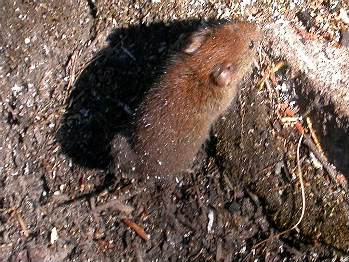|
|
A new study shows that mammals in the state of Michigan are moving north because of climate change, pushing out other species on the way.
Researchers studied the distribution and population of nine small mammals from live-trapping data over 30 years and notes from research museums covering the past hundred years. They utilized over 14,000 records covering the nine species.
“We’re talking about the commonest mammals there, mammals that have considerable ecological impact,” said lead author Philip Myers, professor of ecology and evolutionary biology at University of Michigan. “They disperse seeds, they eat seeds, they eat the insects that kill trees, they disperse the fungus that grows in tree roots that is necessary for trees to grow, and they’re the prey base for a huge number of carnivorous birds, mammals and snakes. But we don’t know enough about their natural history to know whether replacing a northern species with a southern equivalent is going to pass unnoticed or is going to be catastrophic. It could work either way.”
 Southern red-backed voles are in decline due to climate change. Photo by: D. Gordon E. Robertson. |
The study, published in Global Change Biology, found that the four species with the more southern range—white-footed mice, southern flying squirrels, eastern chipmunks and common opossums—were increasing in population, while the northern species—woodland deer mice, southern red-backed voles, northern flying squirrels, woodland jumping mice, and least chipmunks—faced declines.
After compiling and studying 14,000 records, the researchers looked for an explanation.
“There’s a lot more forest now than in the late 1800s and early 1900s, when logging and fires almost completely destroyed the forests of the northern Great Lakes region,” Myers said. “But that doesn’t work as an explanation for the patterns we see, because the species that are moving in and becoming more common are actually ones that do very well when forests are cut over.”
In addition, changes in mammal distribution showed the same pattern in Michigan’s Lower Peninsula, where humans have increased over the past 50 years, as in the Upper Peninsula where the population has actually declined.
The scientists next set their eyes on climate change, researchers compiling minimum and maximum daily temperatures in the Upper Peninsula from 16 different weather stations. They found that temperatures increased significantly from 1970 to 2007 with average minimum temperatures increasing more than average maximum temperatures, leading the researches to believe that climate change is the primary cause for the changes in mammal distribution.
Other studies in North American have shown similar northward movements of mammals, including research in Ontario and Wisconsin.
Related articles
Bird migrations lengthen due to global warming, threatening species
(04/15/2009) Global warming is likely to increase the length of bird migrations, some of which already extend thousands of miles. The increased distance could imperil certain species, as it would require more energy reserves than may be available. The new study, published in the Journal of Biogeography, studied the migration patterns of European Sylvia warblers from Africa to breeding grounds in Europe every spring. They discovered that climate change would likely push the breeding ranges of birds north, causing migrations to lengthen, in some cases by a total of 250 miles.
Plant communities changing across the globe, says scientist Sasha Wright
(03/29/2009) Having studied plant communities across three continent and within widely varied ecosystems—lowland tropics, deciduous forests, grasslands, and enclosed ecosystems on hill-tops—graduate student Sasha Wright has gained a unique understanding of shifts in plant communities worldwide as they respond to pressures from land use and global climate change. “Plant communities are certainly changing,” Wright told Mongabay.com in a March 2009 interview. “These changes are undoubtedly affected by an increased occurrence of extreme weather events, temperature fluctuations, atmospheric CO2 concentrations, human land use, and in some cases urbanization of populations.”
Global warming drives birds north
(02/11/2009) Nearly 60 percent of the 305 species found in North America in winter have shifted their ranges northward by an average of 35 miles, according to an assessment by the Audubon Society.